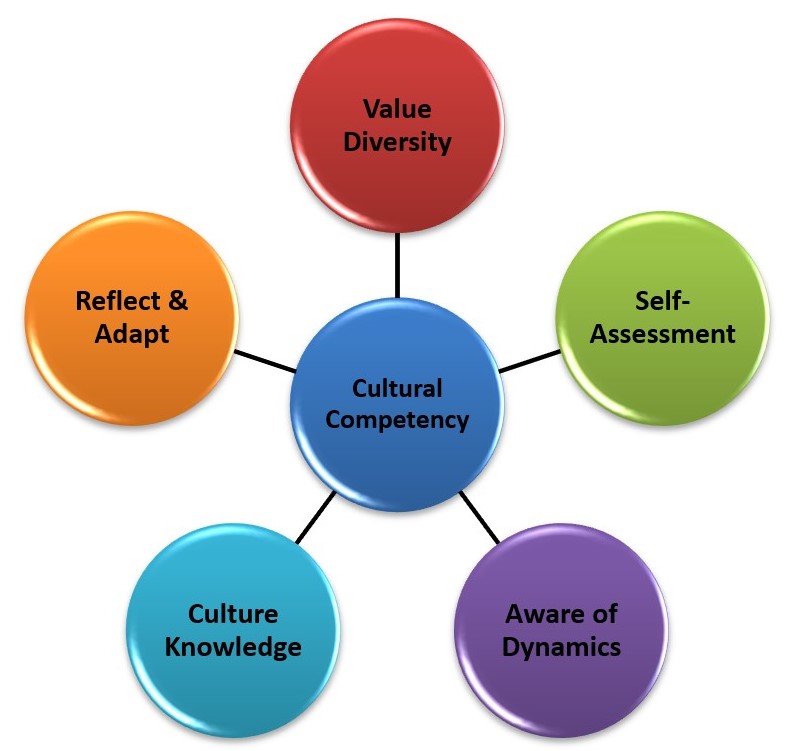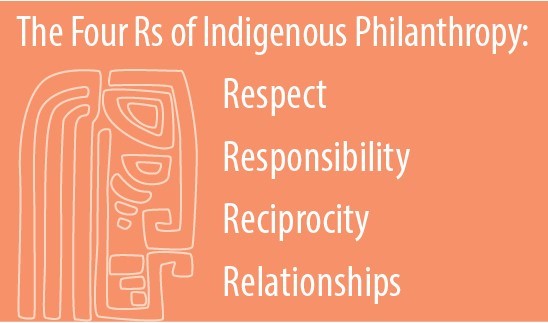Overview
Welcome to LDRS 662 Culturally Inclusive Teaching and Learning. In this course, we will explore theoretical perspectives and practical applications of culturally-inclusive pedagogy.
“Culture is the fundamental building block of identity.” – Laffier, Petrarca & Hughes, in Leavitt, Wisdom & Leavitt, 2017, p. 150.
Cultural identity is a critical component of who we are as humans in this world, and as such, culture influences our teaching and learning experiences. Because culture makes up such a significant part of our identity, this course will challenge you to think deeply about your own cultural identity, as well as your internal and external beliefs and assumptions about other cultures. Together, we will explore theoretical perspectives on cultural diversity, racism, privilege, and cultural competency. Building on that foundation, we will consider theories and applications of culturally inclusive pedagogy, learning environments, and facilitation/coaching methods. Ultimately, this course will prepare you to design and facilitate culturally-inclusive individual and group learning experiences.
Cross et al. (1989) identified five elements of cultural competency, which will provide a framework for learning in this course. These include: “(1) valuing diversity, (2) having the capacity for cultural self-assessment, (3) being conscious of the dynamics inherent when cultures interact, (4) having institutionalized culture knowledge, and (5) having developed adaptations to service delivery reflecting an understanding of cultural diversity” (Cross, Bazron, Dennis, & Isaacs, 1989, as cited in Laffier, Petrarca & Hughes, 2017, p. 150).
Elements of Cultural Competency (Cross et.al., 1989)
In this first unit, we begin the course by…
- Discuss the value of diversity in the teaching and learning experience,
- Engage in self-assessment of cultural identity, implicit biases, and cultural competency,
- Evaluate teaching and learning from a culturally-inclusive perspective,
- Expand our cultural knowledge, and
- Consider how to adapt our coaching and facilitation in a culturally-competent manner.
Topics
In this unit, we will focus on the following topics:
- Introduction to Cultural Competency
- Culturally Inclusive Teaching
Unit Learning Outcomes
When you have completed this unit, you should be able to:
- Assess personal cultural competency.
- Describe key elements of culturally inclusive teaching.
Activity Checklist
Here is a checklist of learning activities for this unit. You may find it useful for planning your work.
- Wordle. Complete a word cloud with words related to your own cultural identity. (Note this will be a part of your participation/discussion grade.)
- Complete a Cultural Competency Self Assessment.
- Read: Irish, & Scrubb (2012). Five competencies for culturally competent teaching and learning
- Key Terms Review
- Discussion (Graded) Review the 10 design principles developed by McLoughlin and Oliver (2000). Write a post summarizing each of the design principles and elaborating on one of the principles.
Working through course activities will help you to meet the learning outcomes and successfully complete your assessments.
Assessment
- Assignment 1: Culturally Inclusive Learning Spaces: Observation
After reading the Hickling-Hudson and Ahlquist (2003) article, visit a classroom or other learning environment, such as a library, childcare center, employee training room, or museum. Observe the resources, artwork, images, and other aspects of the learning environment. Post a blog or audio/video diary with your observations and evaluation of specific ways in which the environment is culturally inclusive and/or homogenous.
1.1 Introduction To Cultural Competency
Take a moment to reflect on this question: Do you consider yourself to be “culturally competent?” Why or why not? What makes someone culturally competent?
Cross (1988) defines cultural competence as a “set of congruent behaviors, attitudes and policies that come together in a system, agency or among professionals and enable that system, agency or professionals to work effectively in cross-cultural situations” (p. 13).
Irish and Scrubb (2012) identified five elements of culturally competent teaching, including critical reflection, respecting others, accommodating individual learners, practicing intercultural communication, and intentionally structured learning experiences.
1.1.1 Activity: It’s Wordle Time!
1.1.2 Activity: Cultural Competence Self Assessment
1.2 Culturally Inclusive Teaching
A culturally-inclusive pedagogy acknowledges that culture informs both learning and teaching; learning is situated within a specific cultural context, which informs the ways we understand knowledge and learning, our expectations for the learning experience, our beliefs about the role of teachers, and our engagement with new content and ideas. Culturally-inclusive teaching challenges us to engage with our own cultural identify, consider ways in which our teaching/learning experiences are informed by our cultural beliefs, and reflect on how our understanding of how knowledge is constructed and known is also directly influenced by cultural beliefs.
“Situated cognition” can be summarised as follows:
- Learning is situated and contextualised in action and everyday situations;
- Knowledge is acquired through active participation;
- Learning is a process of social action and engagement involving ways of thinking, doing and communicating;
- Learning can be assisted by experts or supportive others and through apprenticeship;
- Learning is a form of participation in social environments” (McLoughlin & Oliver, 2000, p. 61).
Culturally-inclusive teaching, therefore, must take context into consideration, acknowledge cultural differences in knowledge production and learning theory, and provide opportunities for learners to reflect on their own cultural beliefs and how they inform the concepts and knowledge they are learning. “Culturally-responsive teaching engages students in self-awareness activities that lead to reflection on cultural assumptions” (Irish & Scrubb, 2012, n.page.). Among other aspects of an inclusive and safe learning environment, Cull et al. (n.d.) maintain that the “4Rs” of Respect, Responsibility, Relevance, and Reciprocity are essential, and furthermore that a respectful learning community is one that “Honours Indigenous knowledges and ways of being” (Cull et al., n.d.).
The Four Rs of Indigenous Philanthropy from International Funders for Indigenous Peoples
In our role as teachers or facilitators of learning, we will often just naturally assume that we know how learning takes place, often replicating curriculum design or learning experiences we have had. However, when teaching in a culture different than our own (or teaching learners from across cultural perspectives) we must acknowledge that our teaching instincts are culturally-informed.
McLoughlin & Oliver (2000) argue that, “The design of Web based instruction is not culturally neutral, but instead is based on the particular epistemologies, learning theories and goal orientations of the designers themselves” (abstract).
1.2.1 Activity: Read and Reflect
1.2.2 Activity: Key Terms Review
1.2.3 Activity: Read and Reflect
Unit Summary
In this unit, we have explored concepts of cultural competency, how the teaching and learning experience is informed by cultural values and experiences, and how to create learning environments and experiences that are culturally inclusive. In the next unit, we will learn about cultural identity, building on the learning in this unit.
Assessment
Unit 1 Discussion
Part A
Post your word cloud image you created in the first activity to the discussion forum (See Assessment tab). Add a couple of sentences explaining how this illustrates your cultural identity and what you learned from this activity.
Part B
Review the 10 design principles developed by McLoughlin and Oliver (2000). Write a post that includes a one-sentence summary of each of the design principles. Choose one of the design principles to elaborate on, writing a 250-word discussion of how you might implement this design principle within a context in which you will be teaching/facilitating. Respond to the posts of two other learners, providing feedback on their application of the design principles.
Grading Criteria
All discussions will be graded according to the following rubric.
Assignment 1: Culturally Inclusive Learning Spaces: Observation
Read: Hickling-Hudson & Ahlquist. (2003). Contesting the curriculum in the schooling of indigenous children in Australia and the USA: From Eurocentrism to culturally powerful pedagogies
After reading the Hickling-Hudson and Ahlquist (2003) article, visit a classroom or other learning environment, such as a library, childcare center, employee training room, or museum. Observe the resources, artwork, images, and other aspects of the learning environment. As you observe, take verbal or written notes. In the Discussion forum, post a written description and/or audio/video diary with your observations and evaluation of specific ways in which the environment is culturally inclusive and/or homogenous. Include a reflection on how these elements might contribute to or hinder learning in this environment, integrating the resources you have read in this unit and citing as appropriate.
Include audio, video, and/or images to illustrate the specific aspects that demonstrate cultural inclusivity (or lack thereof). (Note: no names or images of individuals should be included in your audio, video, or written documentation. If appropriate, use a pseudonym for your site, including a description that does not reveal the location or other identifying aspects).
Rubric
This assignment will be graded using the Discussion Rubric.

